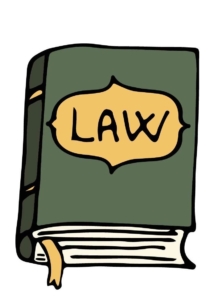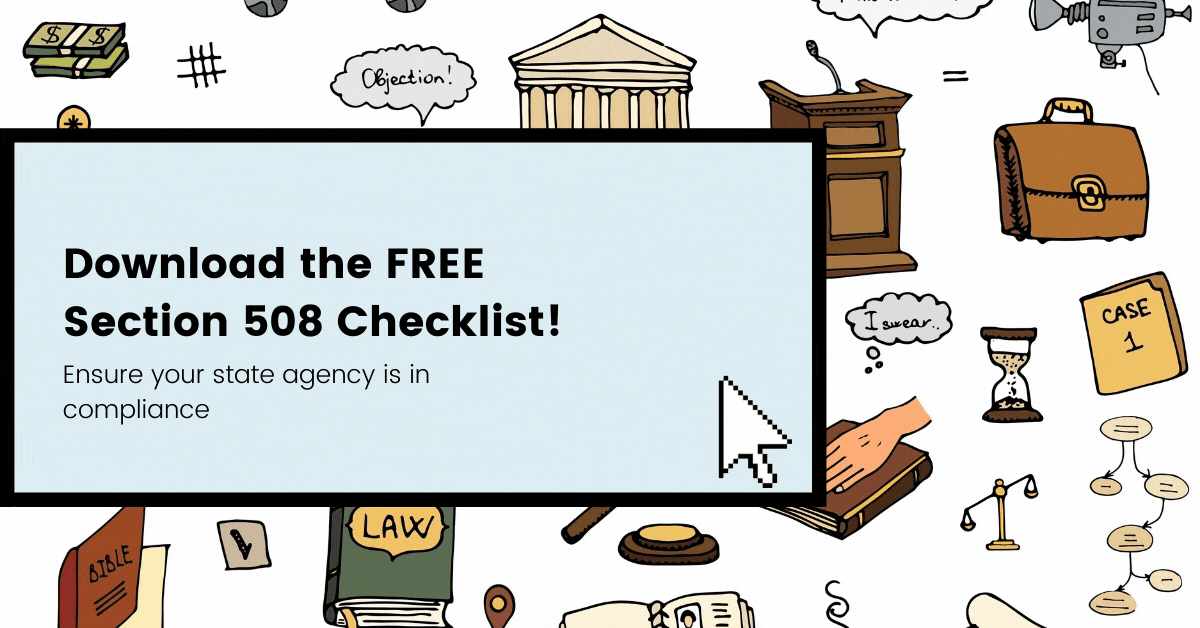Florida State Web Accessibility Laws
Updated: October 20, 2023
A majority of the states in the U.S. provide their agencies with standards for implementing and maintaining website accessibility.
These state laws, otherwise known as “little 508s”, have been adopted after one of the most prominent accessibility laws in the country, Section 508 of the Rehabilitation Act of 1973.
Under Section 508, state and federal governments must ensure that all electronic communications and information technologies are made accessible.
The state of Florida has introduced web accessibility standards to ensure equal access for all of its citizens, including those with disabilities.
In this post, we’ll cover the sunshine state’s web accessibility laws that all state agencies must adhere to.
Download The Section 508 Checklist ➡️
How Section 508 and WCAG Impact Florida Accessibility Laws
According to the 2020 Florida Statutes, “each state agency shall develop, procure, maintain, and use accessible electronic information and information technology […] that conforms to the applicable provisions set forth by s. 508 of the Rehabilitation Act of 1973…”
The Section 508 Refresh directly references WCAG 2.0, otherwise known as the Web Content Accessibility Guidelines – the most comprehensive guide for web accessibility.
WCAG is a set of guidelines on how to make web content more accessible to all users. In particular, following these guidelines will make content more accessible to people with disabilities, including blindness and low vision, deafness and hard-of-hearing, limited movement, and a number of other disabilities.
It addresses accessibility on all web content including websites, applications, video, audio, and more.
WCAG is not a law, however, many accessibility laws around the world reference WCAG as a standard to follow in order to make web content accessible.
It’s important to note that WCAG 2.0 is the minimum requirement in order for state agencies to comply with Florida accessibility laws. However, the most up-to-date standard of WCAG is WCAG 2.1, which encompasses more comprehensive requirements. Although Florida state agencies aren’t required to meet WCAG 2.1, it’s recommended to use the latest standard so that web contents and its information can be as inclusive and user-friendly as possible.
These state laws are not solely limited to citizens with disabilities, but they apply to state employees with disabilities as well. Employees should be provided with access to the state’s information and data that’s comparable to that which is provided to the public.
The only exception to this is if providing accessible web contents will create an undue burden. In the event that a state agency cannot comply with Florida accessibility laws because of an undue burden (i.e. financial hardship), that agency may be exempt from compliance with said laws. However, in this circumstance, the agency must provide individuals with disabilities with the information and data, if requested, in an alternative format.
Check Out The Section 508 Checklist!
How These Laws Affect Video Accessibility
Since Florida requires that state agencies comply with Section 508 of the Rehabilitation Act, what does that mean for video accessibility?
Well, according to WCAG 2.0, videos must be made accessible to viewers with disabilities.
WCAG 2.0 Level AA is the industry standard for web accessibility. WCAG has three levels of compliance: A, AA, and AAA. Level AA, specifically, is the standard most commonly referenced in major accessibility laws, including Section 508.
In order to comply with WCAG 2.0 Level AA, videos must be made accessible through captions and audio description.
- Level A: (1.2.2) Captions are provided for all pre-recorded audio content in synchronized media, except when the media is a media alternative for text and is clearly labeled as such. (1.2.3) An alternative for time-based media or audio description of the prerecorded video content is provided for synchronized media, except when the media is a media alternative for text and is clearly labeled as such.
- Level AA: (1.2.4) In addition to Level A compliance, captions are provided for all live audio content in synchronized media. (1.2.5) Audio description is provided for all prerecorded video content in synchronized media.
This means that state agencies must provide captions for both pre-recorded or live video and audio content. In addition, audio description must be provided for pre-recorded video content.
Learn About Other U.S. State Accessibility Laws
Click on the map below to learn more about web accessibility laws in other states.
[us_map]Click below to access your free download! 👇








